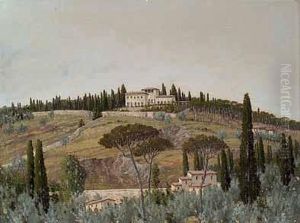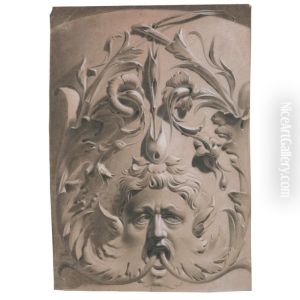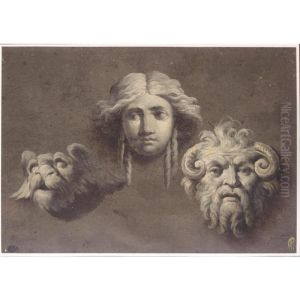Giacomo Albertolli Paintings
Giacomo Albertolli was a prominent Swiss-Italian architect, painter, and ornamental designer born on October 15, 1743, in Bedano, a small town in the Italian-speaking canton of Ticino in Switzerland. Albertolli's contributions to architecture and decorative arts spanned the late Baroque and Neoclassical periods, making him a significant figure in the transition between these styles. His family was deeply involved in stucco work and ornamental design, which influenced his early education and career direction. After initial training with his family, Albertolli moved to Parma to study at the Academy of Fine Arts, where he further honed his skills in architectural and ornamental design.
Albertolli's work was characterized by his meticulous attention to detail and his ability to blend architectural elements with decorative art, creating harmonious and elegant spaces. In 1773, he moved to Milan, where he became a professor at the Brera Academy, teaching ornamental design. This position allowed him to influence a generation of architects and decorators, spreading his stylistic ideals throughout the region. Among his notable architectural projects are the Villa Reale in Monza and various contributions to the Royal Villa of Milan. Albertolli's designs often featured classical motifs, such as acanthus leaves, palmettes, and Greek frets, which he rendered with exceptional delicacy and precision.
In addition to his architectural work, Albertolli was an accomplished ornamental designer, producing designs for furniture, silverware, and other decorative objects. His published works, including the influential 'Alcune decorazioni di nobili sale ed altri ornamenti' (Some Decorations of Noble Halls and other Ornaments), served as valuable resources for craftsmen and designers. These publications illustrated his ideas on interior decoration and were widely disseminated, contributing to the spread of Neoclassical aesthetics in Europe.
Giacomo Albertolli's legacy is reflected in his contribution to the architectural and decorative arts of his time. His work exemplifies the elegance and clarity of Neoclassicism, bridging the gap between the ornate styles of the Baroque and the refined simplicity of the Neoclassical movement. Albertolli passed away on November 15, 1839, in Milan, leaving behind a rich body of work that continues to be studied and admired by architects, historians, and art enthusiasts.



